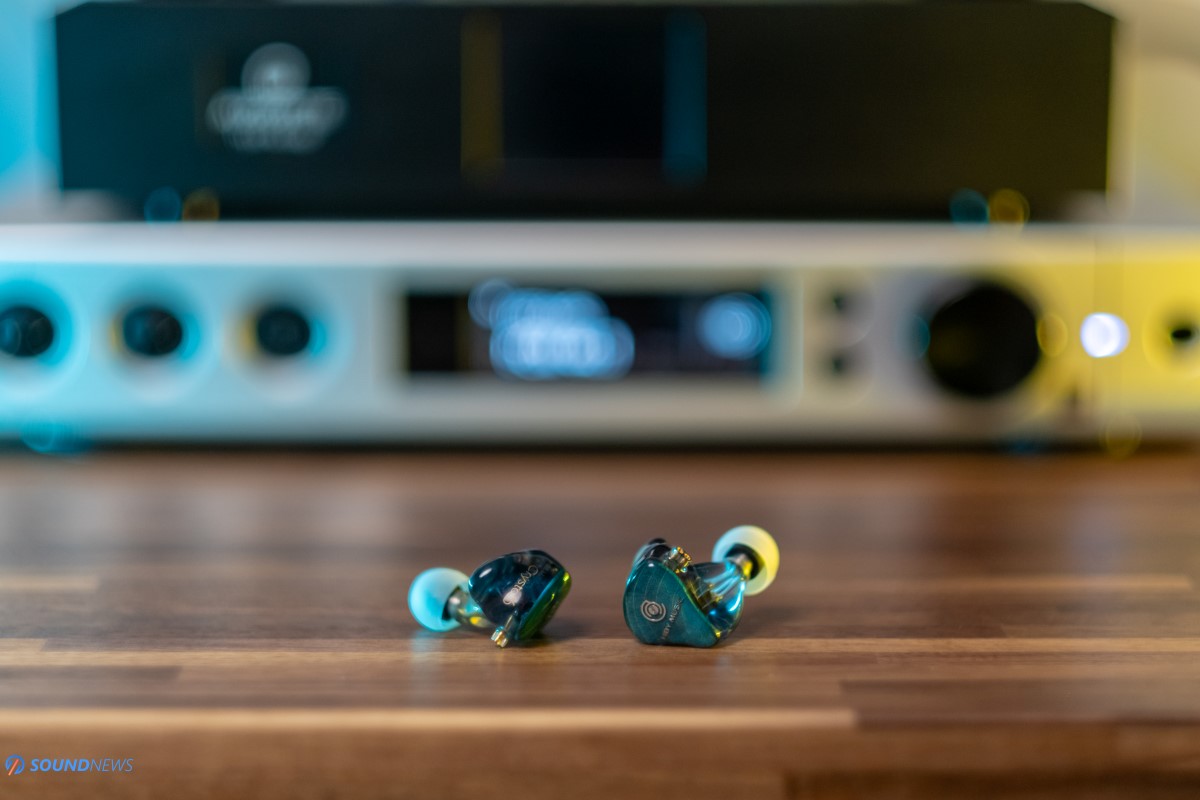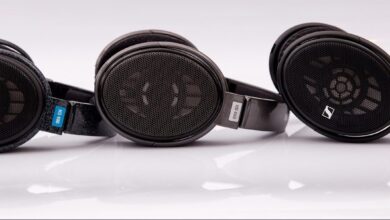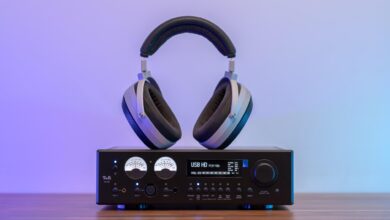Hiby Crystal 6 Flagship IEM Review – Six Times Crystal Clear

My Video Review:
There’s always a first time for everything in life. In my case, I am meeting Hiby Audio and all their doings for the first time. In case of Hiby Audio (Hiby from now on), they just finished working on their first flagship IEM that is called Crystal6.
You probably heard about their portable DAPs and Bluetooth gizmos by now, they’re literally everywhere, even their Hiby Music and Hiby Blue (formerly Hiby Link) software are extremely popular among Hiby’s own portable players and not only…as you can install them on any modern Android device. Their Hiby Link two-way Bluetooth controller was so popular, that many other companies started copying its features, releasing their own remotes. If you give it a search, people still use it today on many portable DAPs of Shanling, Cayin, Tempotec, Questyle and Hidizs.
With 20 years of experience under their belts mostly in the portable audio field, a time came to unleash their geniuses and craft some nice looking IEMs. The biggest splashes are making the tallest waves and that is why behind closed doors Hiby went all-in with R&D, coming out with a flagship all-armature-based IEM that I will be testing today. I don’t remember exactly when I’ve tested an armature-based IEM for the last time, but one with 6 drivers per side and with a custom 4-way crossover…probably never. Crystal6 goes for $459, but let’s check out if they are worth it or not.
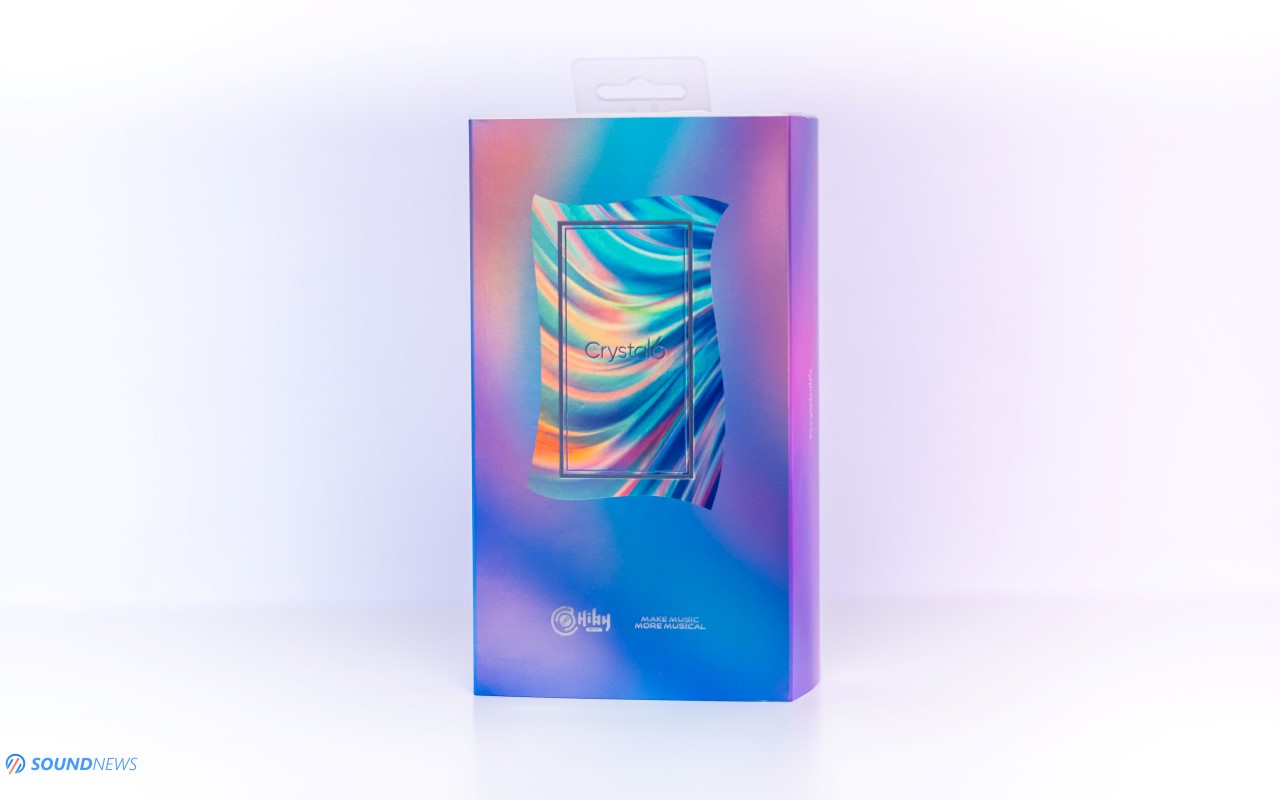
Unboxing
Hiby prepared an outstanding unboxing experience, they used thicker card-board boxes and plenty of foam that will surely protect the precious cargo during shipping. Upon opening up the case a message is being revealed, their goal is to Make Music More Musical. I’ve raised my right hand as I’m with them on this brave quest. So far, so good, I’m liking what I’m seeing.
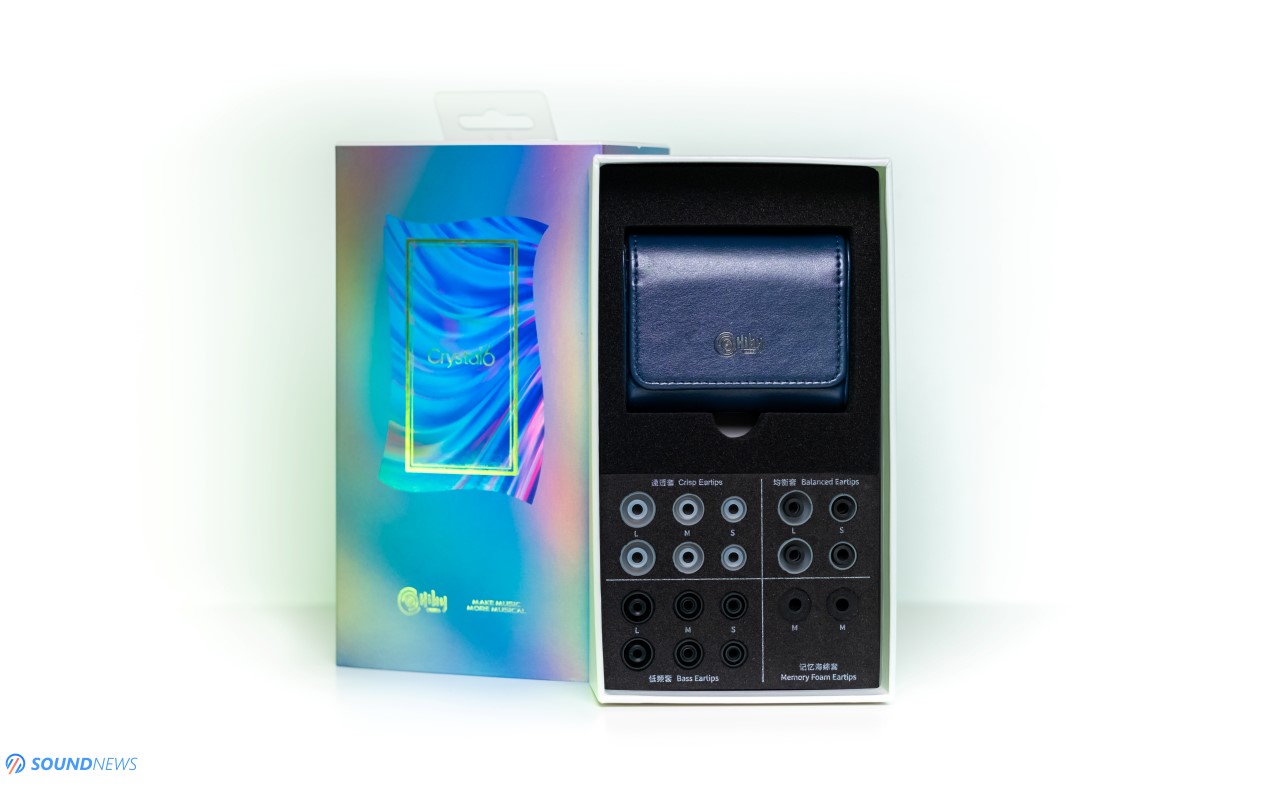
Package Contents
Hiby provided plenty of accessories for casual and for seasoned audiophiles alike, that is exactly why you’ll find a detachable cable terminated with a 3.5mm connector and another one with a 4.4mm Pentaconn connector – which I used the most in my evaluation. The cables have 2 pin 0.78mm connectors on the IEM side and the cables seem to be much thicker compared to entry to mid-level IEM cables. Just underneath the IEMs a leather hard-case can be spotted, that uses a soft velvety-like material on the inside, it holds a simple brush in case your IEMs will need some cleaning. Under the case there is a small accessory compartment which hold the secondary cable and a simple user guide.
Hiby Crystal6 is also coming with 10 pairs of ear-tip, split in 4 categories, as follows:
- Crisp ear-tips (4 pairs of XS, S, M and L sizes), these are the standard white silicone tips. In my experience these worked good for me, as I had a good seal with them. Hiby recommends them for a better detail retrieval and treble presence.
- Balanced ear-tips (2 pairs of S and L sized), these have white silicone bodies with black tubes. If you’re into linear / neutral sound signature, these are definitely for you.
- Bass ear-tips (3 pairs of S, M and L sizes), these have black silicon bodies. If you need a nicer bass impact and a bit of treble roll-off, go with these.
- A single pair of M-sized Memory Foam ear-tips. This is the most comfortable and my favorite pair of ear-tips, that will provide the best seal for an amazing bass performance. Give them a try!

Build Quality & Looks
Crystal6 are by far the nicest looking all-armature IEMs I’ve held in my hands. They remind me a lot about my old 4-way custom IEMs that I used to wear some time ago. They have the same custom like look, their ear-molds seems to be hand-crafted. The most interesting aspect is that each and every Crystal6 unit has a different look, thanks to an unique texture on the dyed wooden panels. The ear-molds are made using high-precision technology with epoxy-filled interior. Crystal6 have 4 independent acoustic tube-ways and you can actually see them with the naked eye. They have a smokey-blue semi-transparent shell and you can see the custom crossover and all those 6 balanced armature drivers.
They have a slightly bigger shell to my daily drivers, but thanks to their shape and slippery body, I find them comfortable long term, they apply a slight pressure on the concha, but that wasn’t an issue for me.
The outer nozzle is having a diameter of 5.7 mm – it’s basically the standard sized nozzle and you can easily use your growing ear-tip collection. The nozzle depth is at about 6mm in length, it’s a bit longer, but I didn’t have a problem using third-party ear-tips as Comply, Spin-Fit and double-flange silicone tips. Those 2-pin connectors are staying outside of the shells and you will need to apply a higher force to attach and detach their cable. In my view, 2-pin connectors are less comfortable long-term since the cable is not spinning around how it happens with MMCX connectors, but it’s a much sturdier connection long term and it’s less prone to oxidation.

Tech Inside Hiby Crystal6
As its name suggests, Crystal6 houses 6 balanced armature drivers per side. Those aren’t off-the shelf drivers, as some of them are custom designed for the Crystal6 alone. It features a giant Knowles 22955 unit that is all about that bass, two custom-tuned Knowles 1006 for clean and warm midrange, one custom-tuned 30098 driver to the treble region, and two custom-tuned 31735 units for a detailed top-octave, sans the ugly brightness. A custom 4-way crossover was also developed and 4 independent tubes will the carrying acoustic waves into your ear canal. When making the cross-over, Hiby used some of the nicest components as Panasonic thin-film capacitors placed on a dual-layer gold-plated PCB.
The cables themselves are quite special, especially the 4.4mm balanced one that uses Ohno-Continuous-Cast (OCC) pure-copper conductors for the best results. The single ended cable uses less impressive silver plated oxygen-free copper conductors, these are also good, but for an all-balanced armature IEM, pure copper works better.
Crystal6 has a sensitivity of 107 dB per 1mW of power and a nominal impedance of just 14 Ohms, meaning that you can drive these with pretty much anything that has a headphone jack. Obviously, dedicated audio sources as Bluetooth dongles, portable DAPs, DAC/Amps and desktop setups would further improve their performance. Crystal6 are also quite sensitive to source noise, so be sure to use a clearer output for the best results.
That is everything you need to know about them, so I’ll just stop here and I’ll start hitting some eardrums.
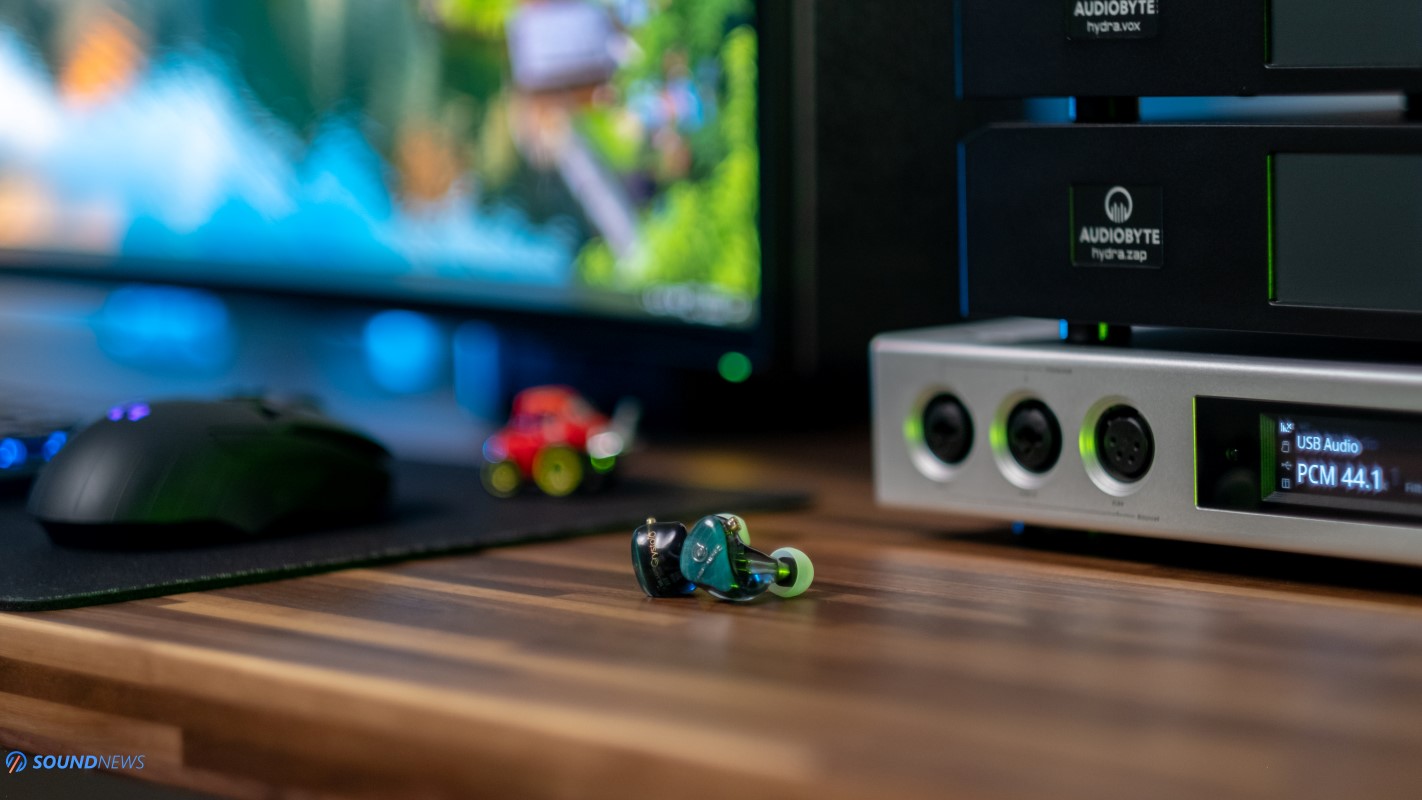
Sound Performance
I. Preliminary Sound Impressions
Hiby weren’t joking naming them Crystal six, as the absolute first thing that came into my mind was their crystal clear, extremely detailed and airy sound with everything I was throwing at them. There’s an overflow of micro-details and small nuances, they were technical sounding in every meaning of the word. They were rendering my music with a laser-like precision, they’re super-fast sounding, almost merciless sometimes with less than perfect recordings. They will easily show all the good and bad from your music, mastering errors have nowhere to hide, all the background noises will be moving to the foreground and I’m quite shocked by how much information they are putting on a plate.
I wouldn’t use their stock Crisp or Balanced ear-tips, I would use the memory-foam ones, maybe their bass enhancing ear-tips, you can certainly use some third party tips as SpinFit or Comply, that would make them just a little more engaging and less treble oriented. The information that is lurking in the top octave is on a higher level compared to the FiiO FA9 and much higher compared to the Meze RAI Penta. They actually remind me about some of the most detailed open-back headphone I’ve listened to…there is indeed a little bit of Sennheiser HD800S and Hifiman HE1000SE transparency and sound signature in here, whiteout the treble itch.
I’m really glad that Hiby used a huge BA driver for the low-end delivery, as I don’t find it lacking in intensity or presence. It is better than what I was expecting, it goes lower compared to the $499 FiiO FA9 and to the $1099 Meze RAI Penta, there is definitely more rumble down low and a decent impact to be felt. I will be measuring them soon and I’m very curious how they would perform on the test bench. Subjectively, their frequency response felt complete, there is quantity and cleanness in the bass, a neutral midrange without being syrupy or warm and an extended treble performance that goes sky high past top octave. Crystal6 appeared as honest and linear sounding to me, slightly tilted towards fun and engaging.
The imaging and layering were better compared to my daily drivers, there were bigger void spaces between the notes and while the soundstage wasn’t wider or taller, their depth was in another league altogether. There was a short echo between few musical notes, some of them appearing disjointed and I don’t remember when I’ve heard such a nice layering and 3D imaging around me.
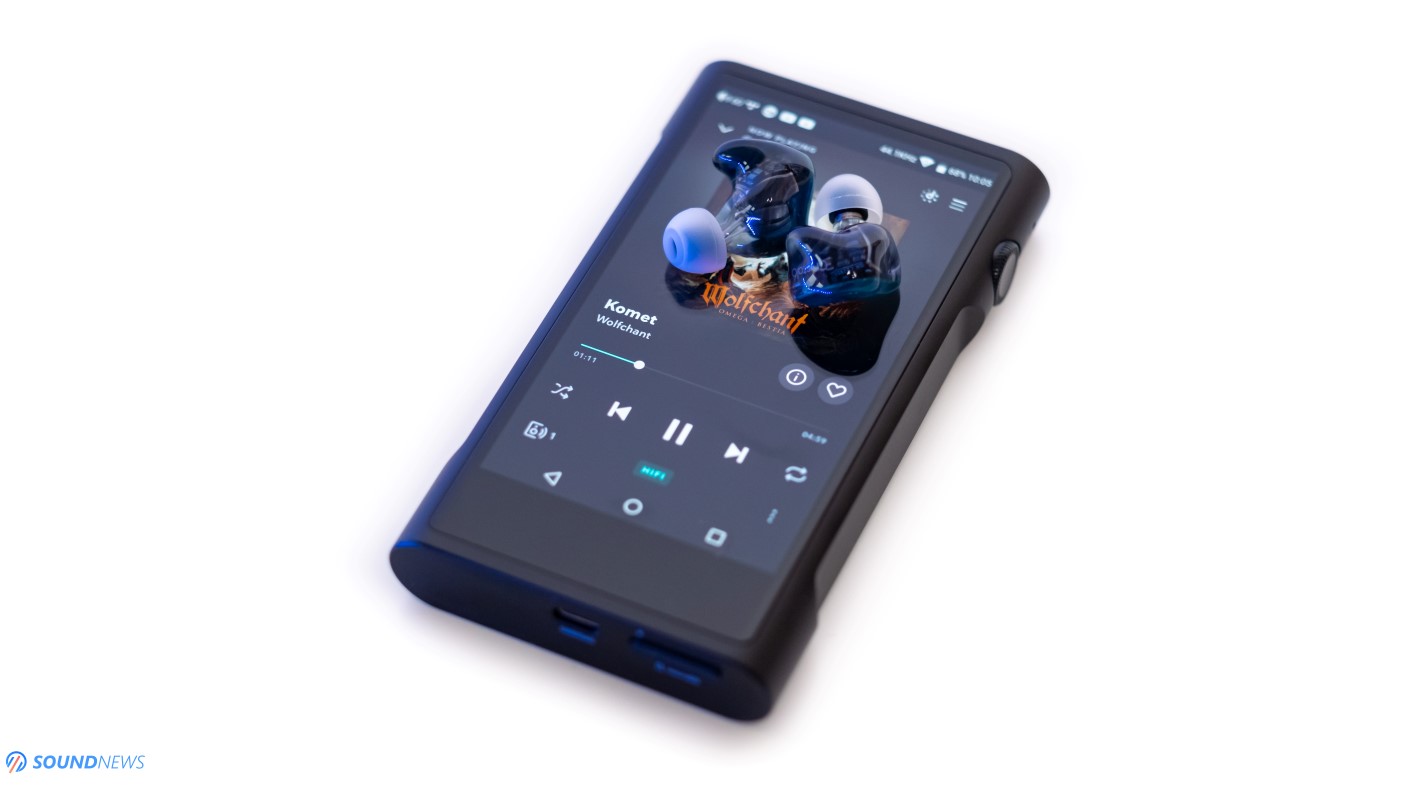
II. Power Requirements
At 107 dB per 1mW of power, Crystal6 are approaching some of the most sensitive IEMs I’ve tested so far. Power wise, you can drive these with almost anything that has a headphone jack, even Low-Fi smartphones, tablets and laptops should be more than capable of very high volumes. Crystal6 aren’t exactly power-hungry IEMs, but they will definitely sound nicer out of a dedicated audio source, be it portable or not. Small Bluetooth dongles like Qudelix 5K and FiiO BTR5 worked well, nicely boosting their performance, small USB dongles like Shanling UP2 and of course portable DAC/Amps as xDuoo XD-05 BAL and FiiO Q5S TC further improved their technicalities to the next level. Higher-tiered portable DAPs like FiiO M15 and Shanling M8 sounded probably the nicest with them, but seriously now…you don’t need expensive setups to enjoy them at maximum.
Crystal6 scaled well with TOTL DAPs and well-thought desktop setups, but I would personally stay away from THX-AAA and NFCA amplifiers. These are already very transparent and detailed sounding, they need just a little bit of soul and midrange presence, so I would use AKM-based DAPs/DACs and some warmer sounding amplifiers that could further boost its midrange and tame its treble delivery.
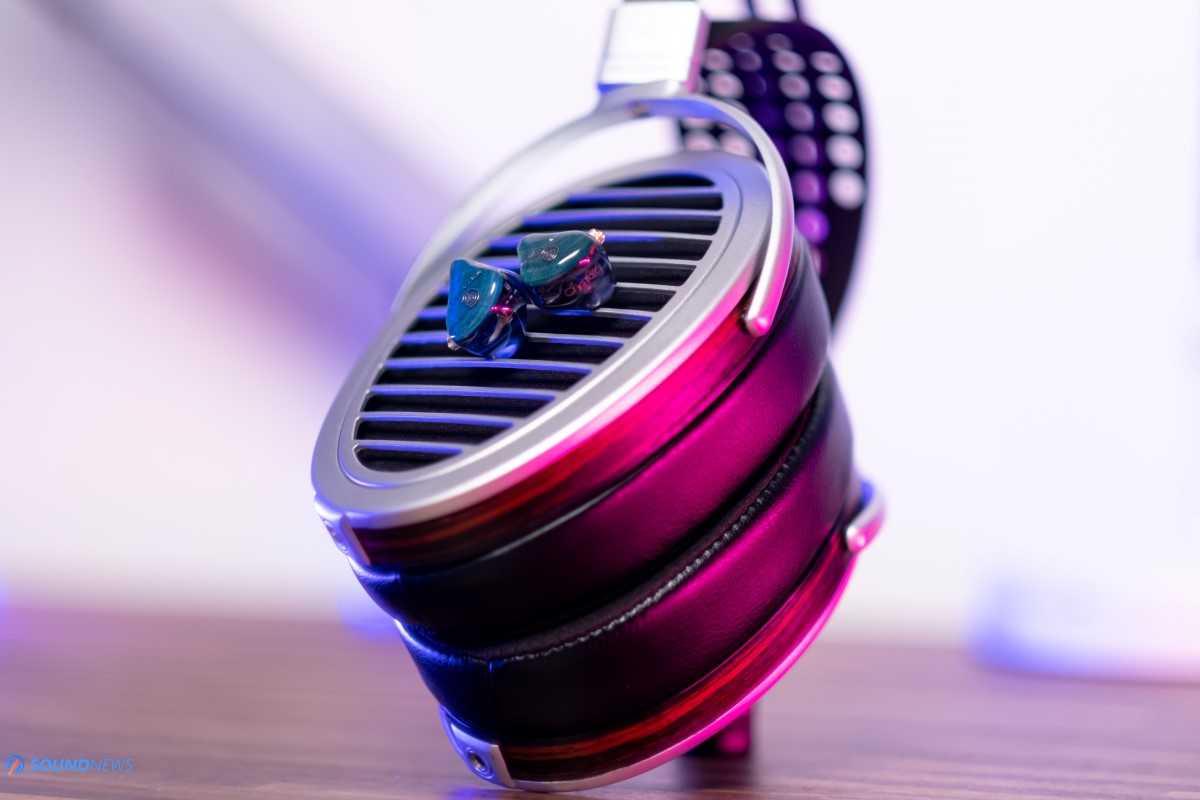
III. Transient Response
Crystal6 are technical sounding IEMs and as you can expect, they will impress with their lightning-fast transient response, with their short decays of the notes and it shouldn’t be a surprise to anyone as most well-designed all-armature IEMs are sounding like this. With memory-foam and bass enhancing ear-tips you can certainly hear a small improvement in the slam department, but in all seriousness if bass-slam is something that is very important to you, then a hybrid IEM will better fill that role. Still, I find them quite impactful and engaging sounding and that always lifts my mood in difficult days. I don’t remember last time when sub-bass was both linear, clean, yet rumbling and hard slamming in all-armature IEM. I’m really glad that Hiby went one step further, making sure these will not be lacking in the sub-bass territory as it usually happens with BA IEMs. I’m not joking at all as most BA IEMs at less that $1K are seriously lacking in the sub-bass territory, yep, including the beautiful Meze Rai Penta. Their impressive imaging and depth made the whole experience a lot more 3D, a lot airier and somewhat bigger sounding, that worked as a huge bump in the bass quality department. The low-end delivery felt of a higher-quality, there were multiple bass layers that were extremely clean and defined sounding. If you are into a very honest sound, into an extended frequency response, then Crystal6 will easily win you over with their strict technicalities.
Some of the fastest tunes I know where quite impressive to say the least and sometimes Crystal6 reminded about top-class planar-magnetic open-back headphones. The best of Hiby were up there with the best when it comes to detail retrieval and speed, they need just a small bump in the slam department that can easily be achieved with a nicer DAP, maybe with a class-A amplifier and you’ll be ready to rock.

IV. Soundstage & Depth
Entry to mid-level IEMs that cannot move a lot of air down low, will never impress you with their sound staging capabilities, mostly because the whole experience will feel incomplete, like something is always missing…Take the sub-bass region as a good example, when it goes out of the picture, soundstage will be affected in a bad way, there wouldn’t be air traveling around, layering will suffer deeply and that will lead to a less impressive soundstage and depth. Luckily, our Crystal6 right here is extremely potent in the sub-bass territory, there is plenty of air traveling around in those regions and of course its 4-way bore design and 6 drivers per side will make your music decompressed and well-spread in all directions.
An IEM sitting just one or two millimeters away from your eardrum will probably not impress that much in terms of stage size when you put them versus open-back planars, but they will surely rumble with the best when it comes to depth, layering and pin point location of the notes. I must add that the last part is very impressive as I didn’t even need to close my eyes to hear the location of notes in a crowded track, their transparent nature made me walk easier around, picking only the notes I wanted to hear. Crystal6 does really open up your third eye and fully unlocks your imagination, there were plenty of moments when I would just stop and be immersed by the music. Crystal6 is not an IEM that you put on and forget about them, they always want to impress the listener with something…sometimes with their clear and transparent performance, sometimes with their speed, but more often I was impressed by how deep they appeared compared to other IEMs. Soundstage is pretty much the same with my daily drivers, but depth…is on a higher level altogether.
With their balanced cable out of a Shanling M8, the *Big Rig wasn’t missed at all as I had all the layering, all the impact I wanted, an ultimate transparency was also there, like I put a heavy-weight high-end desktop setup in my pocket, as I could re-live the same emotions anywhere I’d go.

V. Detail Retrieval & Transparency
I have arrived at the culmination of what makes Crystal6 an outstanding IEM in the first place. Their name is fully justified as they will be always unearthing fresh new details out of your tunes, providing a higher degree of transparency, while sounding crystal clear all the time. Well-mastered tunes will start sounding legendary and less impressive music can bring background noises on the foreground, making everything less interesting and more bothersome. The difference between good and bad mastered music becomes more obvious, as Crystal6 aren’t smooth easy-riders that are wiping clean small nuances from your tunes, be them good or bad. This is pretty much the most impressive part about them and if you’re hunting for the last drop of information, then I found the right magnifying glass for your music.
As of right now, from my IEM collection, only the FiiO FA9 can stand a chance versus them, as everything else that I have at my disposal isn’t that impressive in this department. Some are approaching closely, but are never outplaying the Crystal6 at their own game. The interesting part is that they can scale amazingly well, especially when it comes to details and no matter how high you go, there will be always a small increase of performance. I am a little taken away by how much information they can still provide with Hi-Res PCM and DSD material and I’m glad to experience such kind of performance at less than $500 which a few years ago wasn’t possible unless you went berserk towards your wallet.

VI. Frequency Response
Hiby’s flagship IEM have a close to perfect frequency response, there are maybe a few rises here and there, but not a single drop and that really differentiates amateur IEMs from high-end ones.
A. Bass
Crystal6 have an outstanding bass performance, even starting with the lowest notes as 20 Hz. There is air traveling around, there are plenty of layers and sub-layers of rumbling bass, it feels like a high-quality type that delivers fully on the quantity requirements. It isn’t elevated at all; it is just right in their stock form. For an added punch and for more giggles, you can always swap their ear-tips with bass enhancing ones or with memory-foam ones. The balanced armature bass is somewhat different to a dynamic one, the speed is right, decay is perfect, you can feel its weight and air traveling down low, but its isn’t the punchiest and the naughtiest type of bass. That is the only downside of BA IEMs and that is the sole reason hybrid IEMs were invented.

B. Midrange
Midrange performance is pretty much in line with the low-end, I don’t find it thin or lifeless, there is plenty of naturalness to be felt. Vocal performance is good, there is an added weight with male voices, a light sweetness and a higher pitch with female voices. I find its midrange linear for the most part, with just a small boost in the lower region. Crystal6 is extremely correct in here, so forget about a soul-grabbing silky-smooth midrange, as that wouldn’t happen. You can certainly boost its tone and add more emotion in here with an AKM-based DAP with several OPA’s in the output stage. From a small collection, FiiO M15 and Shanling M8 made them warmer and sweeter sounding, heavily counterbalancing their small issues. If you are into EQ, they respond immediately to it and for a heavier tonality just add 2 to 4 dB somewhere between 600 Hz and 2 kHz.
C. Treble
I have not a single clue how their entry level IEMs are sounding, but boy…Crystal6 knows some cool moves when it comes to treble performance. I’ve heard a crystal-clear top octave, with manageable peaks, it isn’t bright, nor harsh sounding, just a perfect treble rendition that is super extended to the subsonic levels. You can easily experience tiny dynamic swings like tiny butterflies flying in the background, cymbals and bells sounded precise, metallic and very real. There is plenty of presence in this region, lots of air, plenty of detail and shimmering, but it isn’t fatiguing in long listening sessions. I’ve tried them out of several THX-AAA amplifiers and that was…a no-go as from linear and extended, they can become a little harsh and brittle.
While FiiO FH7 and FA9 are still amazing in this department, beating plenty of IEMs I’ve tested up to that point, Crystal6 is just better, it’s clearer and more extended to the subsonic levels.
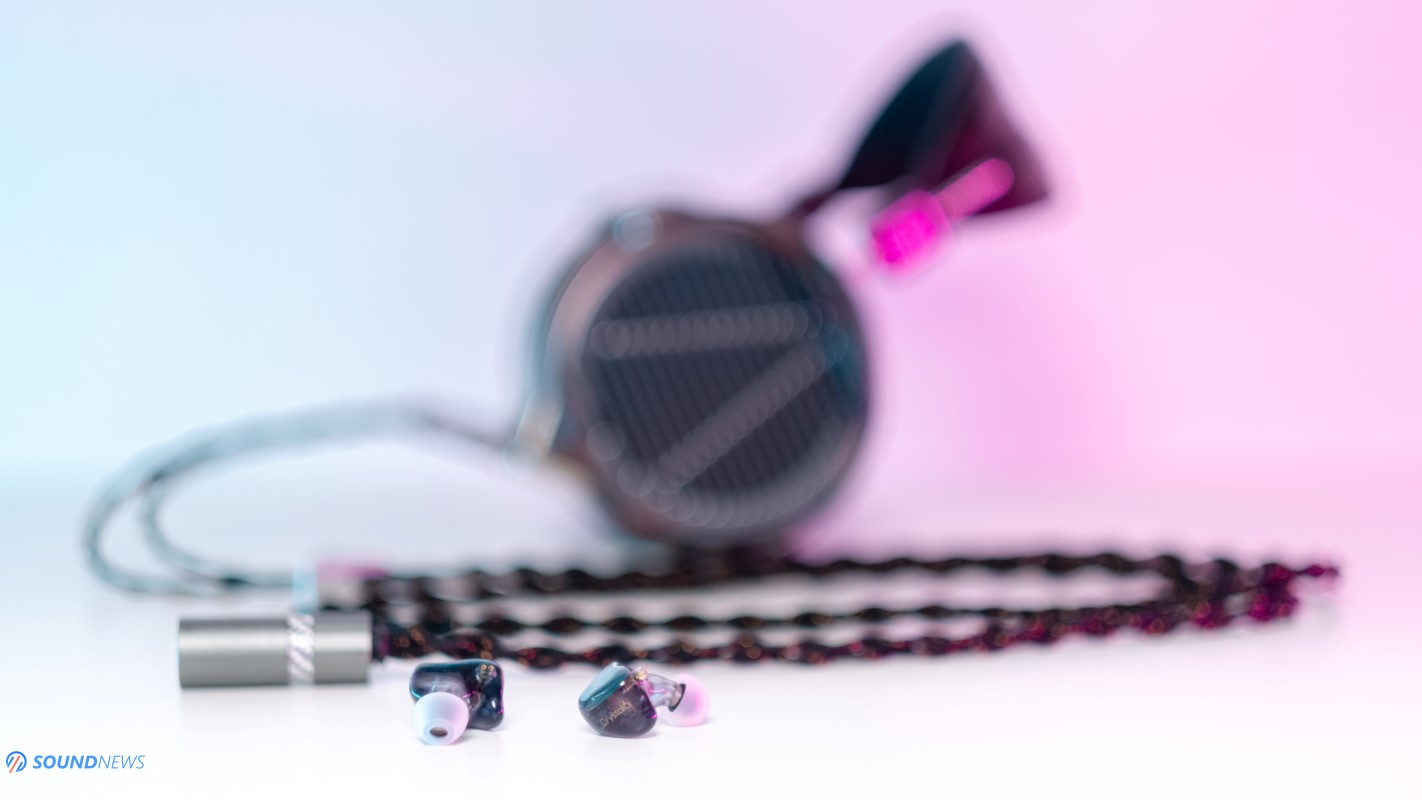
VII. Measurements
When I’m measuring IEMs and headphones, I will always move to the Benchmark HPA4, as I find it extremely linear and super honest sounding. Matrix Audio Element X will be the main converter for this job and the measurement rig used was the MiniDSP E.A.R.S. calibrated with IDF (IEM Diffuse Field) compensation files. Do note that MiniDSP E.A.R.S. is not following any IEC standards, meaning that my readings can’t be used as reference measurements. I’m doing them just to get a general idea about their sound signature. I’ve measured them multiple times, as finding a perfect fit and a complete seal was quite a challenge.

Take a look at their RAW FR measurement and tell me what you see. Their driver matching is absolutely phenomenal! There is a tiny deviation in the upper treble and that is it! All other IEMs I’ve measured of late were worse or much worse in here.
You can see their close to perfect frequency response, their linear and straight as a line bass and midrange sections, you can see its outstanding treble that is extended even past 20 kHz. The most sensitive part of our hearing is elevated by around ~5 dB and that makes everything appear crisper, more detailed and slightly more contoured.

Their Total Harmonic Distortion (THD) reading is great, but not exemplary. It sits at around 0.237 % which is good considering we are dealing with a BA IEM. As you can see, there is a higher distortion in the sub-bass region and going past that point it never reaches 1%.

Its spectral decay is great for the most part, you can see a longer decay in the bass, but everything else seems lightning quick. 0.16 seconds later the signal drops from 85 to 20 dB and that seems faster than most headphones and IEMs I’ve tested of late.

Spectrogram is clean and is not showing weird driver behavior. You can see their hot zones better; the treble appears a little sharper and more present in the 6 to 7 kHz region.
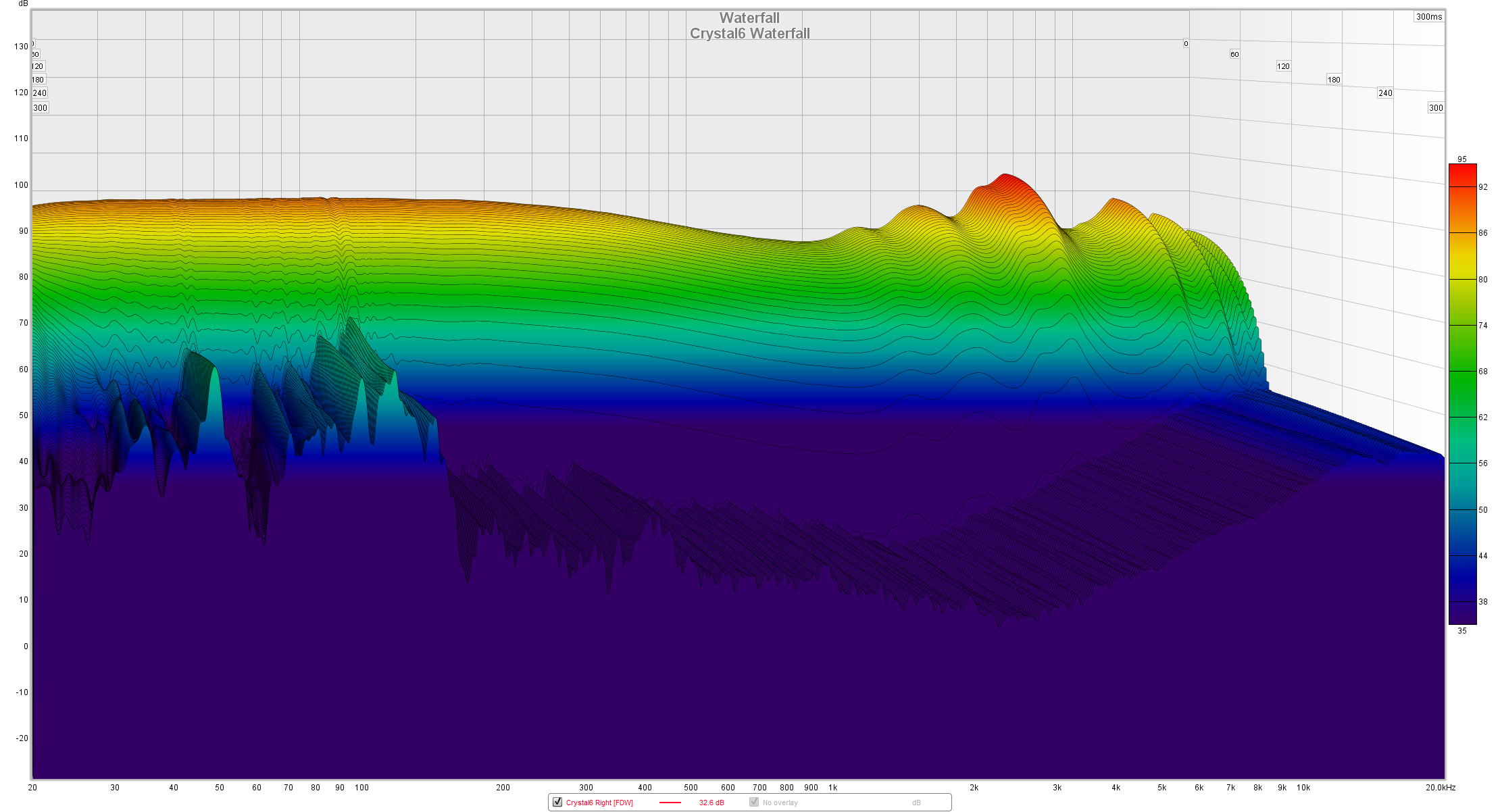
Their waterfall is smooth and gentle and the only thing that can bother is a short spike between 6 and 7 kHz. It if bothers you, it can be tamed with a mild EQ (the easiest way) or with warmer sounding equipment.
Overall, I’ve recorded a linear and extended frequency response with exceptional technicalities that will put to shame many other IEMs.

VIII. A Comparison
Hiby Crystal6 ($459) VS FiiO FA9 ($499)
FiiO’s flagship is a direct competitor to Hiby’s flagship, mostly because it’s an all-armature IEM, it also has 6 drivers per side and both are part of the same price bracket. Design and build-quality wise, Crystal6 is a slightly better unit, it looks nicer and it’s built at a higher standard. I still can’t get over the plastic nozzle on the FA9, which isn’t securing the ear-tips in place. Every time I’m taking out the FA9, its ear-tips will fell off on the ground and that never happened with Crystal6.
When it comes to accessories, FA9 has more of them, but Crystal6 is coming with an additional 4.4 balanced cable that uses high-purity OCC copper conductors and in the end it looks like a draw to me.
Moving on to the sound quality, I’ll be using Spin-Fit tips on FA9 and memory foam ones on Crystal6, both we tested in a balanced configuration and I enabled the bass boost on FA9, since that is the only way I can enjoy the FA9.
Right off the bat, Hiby’s creation appeared as better in the bass, it was more impactful, more layered and more detailed sounding. It seemed a lot more engaging to me, no matter if it was funk, rock or electronica, Crystal6 pounded harder and had a faster tempo, awakening nicer dynamics in the process. Midrange felt a little fuller and meatier on the FA9, male voice had a stronger authority and a longer decay. Crystal6 was no slouch in here, but wasn’t that impressive. With old jazz recordings, where midrange presence is everything, FA9 worked a little better, infusing just a little more soul and emotions. The whole treble region felt considerably snappier, more present and more defined on the Crystal6. Treble seems fine on FA9, it still present and very detailed, but it is on a higher level on Hiby’s creation. With few particular tracks, it can be too much at times and FA9 might appear as smoother and more relaxed sounding.
When it comes to pin point location of the notes and depth, Crystal6 wins another round, it just sounds airier, deeper and more holographic to me, even crowded music sounds a lot more decompressed. Thanks to a higher presence in the most sensitive part of our hearing and to a better sub-bass performance, Crystal6 are better when it comes to textures, transparency and detail retrieval and as of right now, they appeared as the most detailed IEMs I had the pleasure of testing.
Both IEMs are extremely good and it really comes down to personal preference. I’ll just mention that Crystal6 seems a little more technical, more extended in the FR at the cost of being less silky smooth compared to the FA9. If you like hearing everything hidden in your tunes in a fun way, you can’t go wrong with the Crystal6.
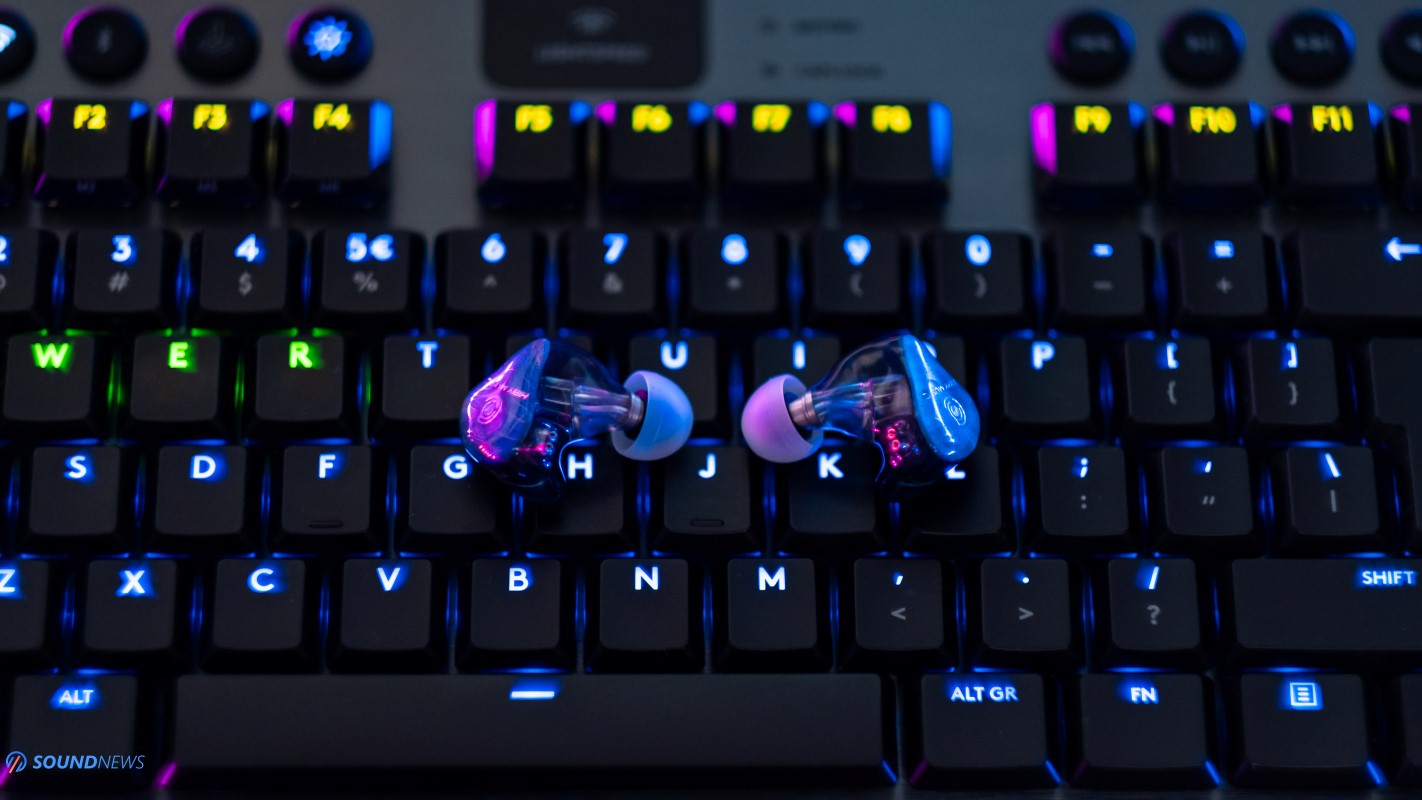
Conclusion
With this release, Hiby put themselves on the map of high-performance affordable IEMs that can rumble with some of the best units I’ve tried so far. Crystal6 felt like a proper flagship from the first seconds of pressing play, their technicalities stood out immediately, their detail retrieval was second to none, their speed was spectacular, but the biggest surprise for me was experiencing that impressive imaging, depth and layering that I never thought was possible via IEMs. Hiby counterbalanced the greatest issue of BA based IEMs by using a colossal BA driver for a nicer bass delivery, making it a lot more extended down low, much punchier, resulting in a livelier sound that should please demanding music lovers. Crystal6 sounded crystal clear with everything I’ve thrown at them and that is their biggest strength and the biggest con, since less than perfect recordings will start showing their age.
At $459 there is little to nitpick and it’s my pleasure to recommend such a great sounding IEM. Hiby Crystal6 was kindly provided by HiFiGo and it can be purchased from their web-store by following this link. They are selling them world-wide and will be sending them from the nearest warehouse to your location, so you can avoid additional fees. In case you get a pair, leave some feedback, I’m curious to know how it sounds in your setup. Until next time folks! Signing out.
PROS:
- Great packaging, a wide selection of accessories
- Its secondary balanced cable is a huge trouble solver
- Amazing custom-like look and finish
- Comfortable in long listening sessions
- Very extended in the frequency response, linear sounding for the most part
- Probably the nicest sub-bass I’ve experienced out of BA IEMs
- Detail oriented IEM, merciless and transparent sounding
- Deep and holographic sounding, accurate pin point location of the notes
- A wide enveloping soundstage
- Can be punchy and engaging with the right music
- Excellent measurements
- Very easy to drive
- High value
CONS:
- Upper midrange lacks some warmth
- A nicer slam would be nice
ASSOCIATED EQUIPMENT:
- DACs: Audiobyte HydraVox + HydraZap, Matrix Audio Element X, Gustard X26 PRO, Gustard X16, Flux Lab Acoustics FCN-10, xDuoo XA-10
- Headphone Amps: Benchmark HPA4, SparkoS Labs Aries, Flux Lab Acoustics FCN-10, Musician Andromeda, Burson Soloist 3X, Gustard H16, SMSL SP400
- IEMs: Hiby Crystal6, IKKO OH10, Meze RAI Solo, RAI Penta, FiiO FD5, FA9, FH7, LittleDot Cu KIS & many others
- Portable over-ear headphones: Sennheiser Momentum 2, Meze 99 Classics
- Full-sized headphones: Hifiman Susvara, Hifiman HE1000SE, Audeze LCD-4, Erzetich Phobos, Erzetich Mania, Quad ERA-1, Fostex TH909, Kennerton Wodan, Kennerton Magni, Gjallarhorn, Vali, M12S, Ollo S4X Reference
- Power Amps: KECES S300
- Loudspeakers: KEF Reference 3
- Interconnects: QED Reference (x2), Topping TCX1 (x2)
- Speaker cables: Kimber PR8, Audioquest Type4
- Power Cables: Isotek EVO3 Premier (x3)
- Balanced Isolation Power Conditioners: PLiXiR Elite BAC400
